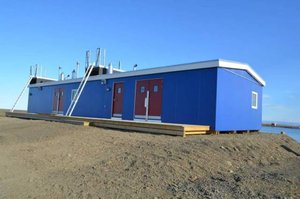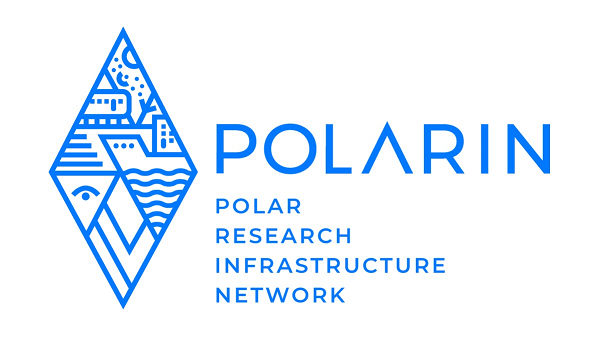Villum Research Station (VRS)

Address
- Villum Research Station secretariat
Department of Environmental Science
Aarhus University
Fredericksborgvej 399
DK-4000 Roskilde
Denmark
Station manager
Henrik SkovStation Features
Opening year: 1990 Status: OpenFacilities
Station name and owner
Villum Research Station (VRS) is owned by the Government of Greenland and operated by Aarhus University, Denmark.
Location
VRS is located on Princess Ingeborgs Peninsula (c. 20 ×15 km2 lowland plain) at the military facility, Station Nord, in North Greenland (81°36’ N, 16°39 W). The station is situated within the National Park of North and Northeast Greenland, the largest national park in the World. The military station has an average elevation of 30 m a.s.l. with a gentle slope to the coast. A 2 km gravel/ice runway, which is kept open year round, is the only gateway to Station Nord. The station acts as a gateway to the northern part of the National Park of North and Northeast Greenland.
Climate data
Grey colours are WMO Climate Normals including maximum and minimum values. Blue colours are individual years.
Climate data for the stations where extracted via Copernicus Climate Data Store, from the global gridded reanalysis product:
ERA5 monthly averaged data on single levels from 1940 to present.
Description and source code: Roemer J.K. 2023. https://doi.org/10.5281/zenodo.10214922
Data Source: Hersbach et al. 2023. Copernicus Climate Change Service (C3S) Climate Data Store (CDS), https://doi.org/10.24381/cds.f17050d7
Biodiversity and natural environment
The station is situated in the High Arctic, and the surroundings are mainly Polar Desert. The area has continuous permafrost, and a continuous snow cover characterise the area for almost ten month per year. The mean annual temperature is c. -17 °C and the mean annual precipitation is c. 190 mm. Mean monthly temperature is -31 °C during the coldest month (February) and 3 °C during the warmest month (July). The Princess Ingeborgs Peninsula plain consists of Quaternary raised marine silt, beach shingle, and glacial deposits. The Quaternary deposits are underlain by rocks of Permian age. Station Nord is situated very close to the Polar Sea, and the sea-ice conditions in the area are generally severe with heavy sea-ice throughout the year. Consequently, ships cannot service Station Nord. Provide access to another Greenland with unique arctic ecosystems including species like ivory ant geese, whales, and muskox.
History and facilities
Station Nord was opened in 1952 as a Danish weather station and emergency runway, and it remained open until 1972, when it was closed and left unused, until the Danish military acquired it in 1975. The research activities at Station Nord have been ongoing since the 1970s with measurement activities being intensified since 1990. The research facilities were established by the Danish National Environmental Research Institute (NERI), which is now merged with Aarhus University. In 2014, the research facilities at Station Nord were substantially upgraded based on a major grant from the Danish private fund, Villum Foundation. VRS now consists of three buildings, including a main building with laboratories and accommodation facilities, an atmospheric/air observatory situated two km outside Station Nord, and a garage with storage facilities. The station can house 14 scientists at a time. The total area under roof is c. 600 m2.
General research and databases
Once the new station is fully operating, a database will be established for storage of all kind of scientific data. At present only atmospheric data are stored in a database maintained by Aarhus University. Meteorological and atmospheric chemical data are reported to EMEP (European Monitoring and Evaluation Programme), and AMAP (Arctic Monitoring and Assessment Programme) and will in the future also be reported to WMO-GAW (World Meteorological Organisation, Global Atmosphere Watch). A list of the parameters currently being measured at Station Nord can be found on http://envs.au.dk/en/research/facilities/villumresearchstation.
Station Monitoring
Human dimension
Station Nord is operated by the Danish military and is manned year round by five soldiers. The nearest Inuit community is situated more than 800 km away.
Access
Traditionally, transport to Station Nord has been with the Danish Air Force Hercules C-130 aircrafts on space-available conditions. From 2015, Aarhus University will arrange weekly flights between Longyearbyen, Svalbard, and Station Nord.


